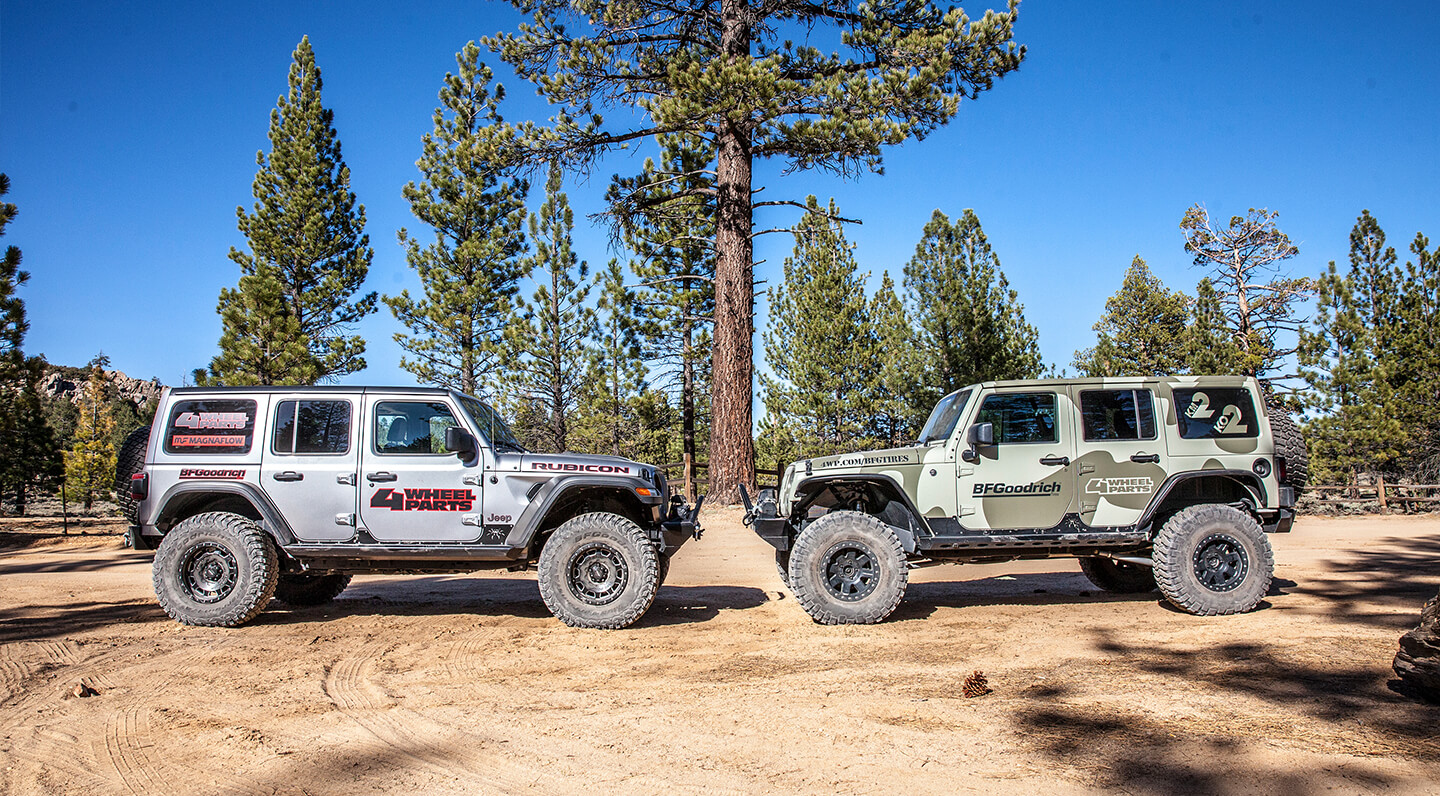
Those two goals are diametrically opposed. Most of time, they’re on somewhat of a sliding scale. As one increases, the other decreases. But Jeep seemed to pull off the impossible with the new JL. It is more refined, comfortable, and swankier than ever before. And, while evolving into a nicer place to spend time in on the highway, it’s still plenty capable when the pavement ends.
Tons of media outlets have covered the upgrades the new JL offers over the JK. However, the bulk of focus is on the JL’s refinements on the pavement. Here at The Dirt, we wanted to see how the JK and the JL stack up to each other in the dirt. And, we didn’t want to use stock vehicles. Most of our readers don’t keep their Jeeps stock for long.
To pull off our test, we pilfered the keys to a modified 2017 Jeep JK Rubicon and a modified 2018 Jeep JL Rubicon and hit the trails around Big Bear, CA. We also had both vehicles out at Moab, UT, during Easter Jeep Week for further semi-non-destructive testing and evaluation. However, the day spent driving both Rubicons back to back in the mountains around Big Bear really exposed the differences between the two. What did we discover? Read on to find out.
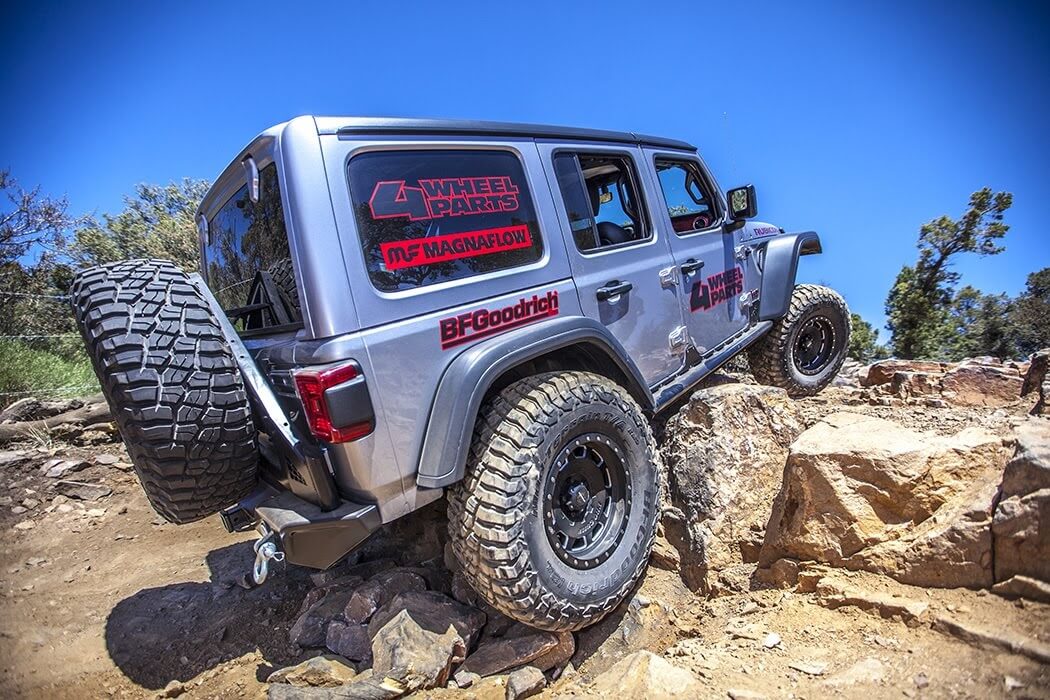
You Can Easily Fit 37s on the JL Rubicon – But So What?
A lot has been made of the fact that it’s extremely easy to fit 37-inch tires on the new Jeep JL Rubicon. With 2-inch taller fenders than the standard JL, the Rubicon only needs a small 2.5-inch lift to allow fitment of 37s. In theory, this sounds great. A low center of gravity with big tires is usually a good combination. In reality, our experience with our JL Rubicon on 37s with a 2.5-inch lift wasn’t so great. We were constantly dragging our JL’s belly on the more difficult trails out in Moab. It was also fairly easy to run out of bump travel being so low, getting into the bump stops hard. We eventually went to 3.5 inches of lift on our JL and were much happier. The smaller lift worked fine on milder trails,but with the slightly longer wheelbase of the JL, it needs more clearance for more technical terrain.
8-Speed Me Please
When we first heard about the new 8-speed automatic transmission in the JL, we figured it was mostly a move for extra fuel economy. After all, the JL’s final overdrive gear is a higher 0.67:1 compared to the final 0.83:1 overdrive in the 5-speed automatic found in the JK. Indeed, the JL does get better fuel economy, but the 8-speed also has a much lower first gear (4.71:1) compared to the JK (3.59:1). Both Rubicons come with the 4.0:1 low range gears in the transfer case, but the JL is the better crawler with its lower first gear. The 8-speed has better programming when put into Drive in low-range, as it holds gears longer and doesn’t upshift at weird times. Another difference is that the lower gear of the 8-speed helps the JLsprint faster to 60 mph on or off the highway. It is definitely a step forward and worth the upgrade. The flipside is the 8-speed is more sensitive to not regearing the axles. We still have the stock 4.10 Rubicon gears in ours and it won’t pull 8th gear, and will only stay in 7th on absolutely flat terrain.

Electric Avenue
For the new JL, Jeep decided to go with an electric/hydraulic steering setup. By using an electric pump instead of a hydraulic one for the steering, horsepower loss is minimized, and there is likely a slight bump in fuel economy as well. In theory, steering effort at very low speeds can be reduced, as the electrically driven pump isn’t dependent on rpm to build pressure. On the trail, we’ve found this to be true. Our JL has an easier time turning 37s than our JK at very slow speeds. But the electric/hydraulic steering setup hasn’t been completely trouble-free. On another JL Rubicon we have, the steering wheel occasionally seems to fight us. A quick browsing of the forums shows we’re not the only ones with this issue. Admittedly, ours seems more minor than the issues some JL owners experience.
Being An Early Adopter
This isn’t really something we tested, but the above issue does bring up a valid point. Our history with the JK runs vast, storied, and deep. We know how to build them, we know exactly how hard we can use them without breaking them, and we know their common fail points. Jeep has alsohad a full decade to iron out any issues with the JK. Being an early adopter of the JL means we are operating more in the dark. There could be issues with the JL that Jeep needs to figure out. And, while some of our knowledge of the JK can transfer over, it will take a while to find the weak points of the JL, and just how hard we can run one. All this is something to consider when deciding between the two.
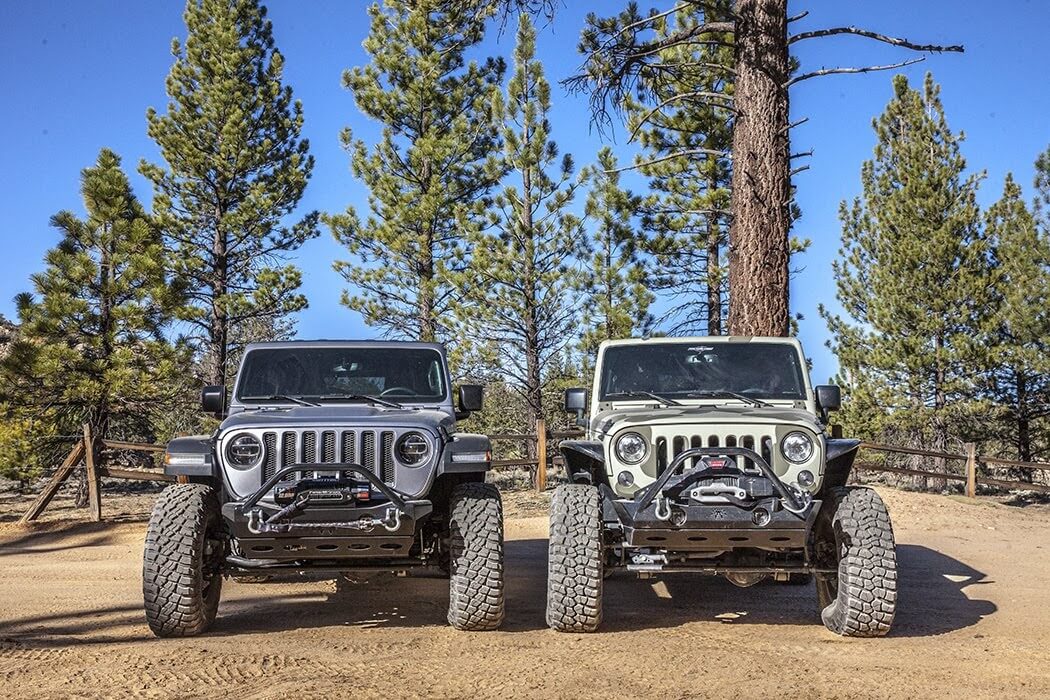
Size Matters
For our test, we tried to find two identically equipped Jeeps, but that turned out to be impossible. We did get pretty close though, with both having 37-inch BFGoodrich Mud Terrains and Poison Spyder Armor. But our JK had a 4.5-inch Rubicon Express long arm kit on it, while our JL had a 3.5-inch Rubicon Express short-arm system. That extra inch of lift might not sound like much, but we were surprised at the amount of difference it actually made on the trail. The belly heights of the JK and JL were closer than we thought (15.9 inches for the JL vs. 16.4 inches for the JK), but the JK had a full inch of extra clearance at the lowest point on the rockers. With the lower front bumper brackets on the JL, its nose is a full 4 inches lower than the JK. An inch here or there might not sound like much, but it does matter.
Controls and Displays
We have never been a big fan of the controls for the lockers and sway bar on our JK Rubicon. We just keep hitting the locker button until something happens. Usually, we’re left trying to remember if we are locking or unlocking the sway bar. Half the time the light just blinks at us until it stops, leaving us to wonder if it actually locked, unlocked, or just gave up. It’s probably something that owners get used to, but it just isn’t intuitive for those who don’t wheel a JK Rubicon all the time. By stark contrast, the controls on the JL are much easier to use, and clearly marked. And they don’t feel like leftover controls from a Chrysler minivan, either. Even better, the TFT screen in the center of the dash tells you exactly the status of the lockers and the sway bar.

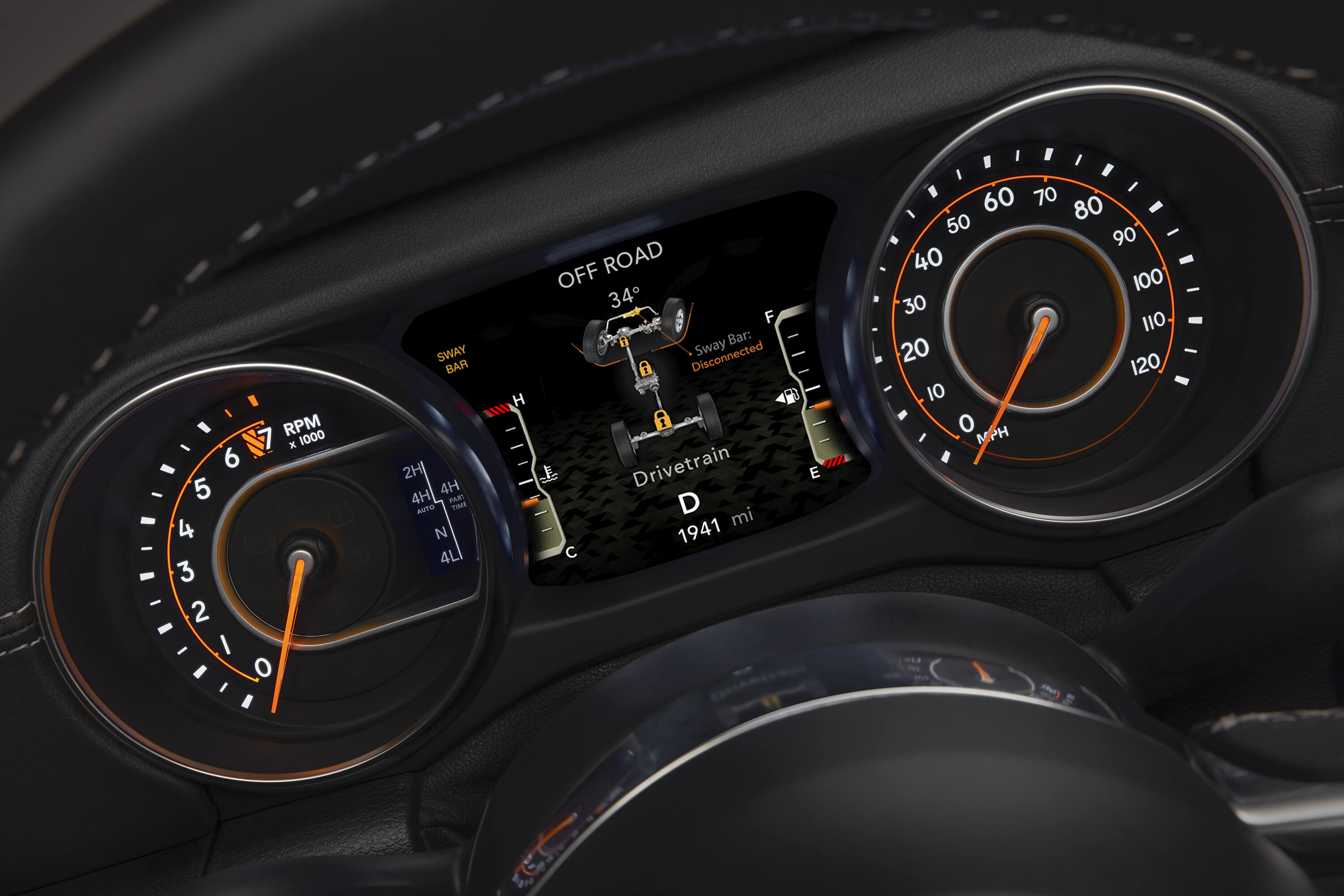
Squeaks, Creaks, and Cheap
On the pavement, it’s easy to appreciate the better build quality of the JL, when compared to the JK. That also translates to the dirt. At speed on dirt two tracks, our JK shakes, vibrates, and quivers. The hardtop creaks a bit and the dash rattles. Even the doors seem to shake. Yes, it has more off-road miles on it than our JL, but it’s not like it has been beaten senselessWhile we might use our vehicles hard, we don’t abuse them. We keep up on maintenance and prep. Overall, the JK just has a cheaper and less well put together feel to it when compared to the JL.
Racking Up The Miles
While this test mostly focused on the JL and JK in the dirt, the vast majority of us won’t be driving either just on the trail. This means they will see plenty of time on the pavement. Here, the Jeep JL was a clear favorite. It was quieter on the inside and more comfortable. It rode nicer and handled better on the twisty mountain roads we pushed it through. The massive 8.4-inch uConnect system is damn sexy, along with the rest of the interior. Little details like the LED lighting, contrasting stitching in the leather seats, cool vented hood, much higher-quality switchgear, and a host of other details add up to a more premium feel over the JK. It actually feels luxurious and more car-like, while still being remarkably capable. If we could pick just one for a long road trip, it would undoubtedly be the JL.
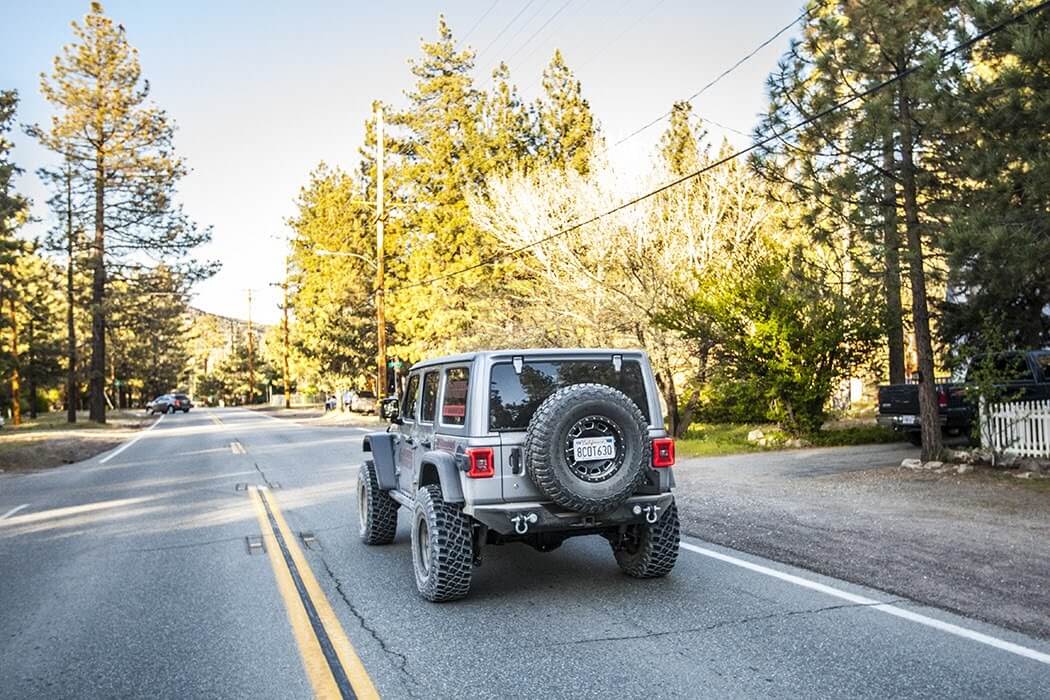
Splitting Hairs
Clearly the JL is better on the pavement, and in a lot of other areas than the JK. But when we shift back to the off-road focus of this test, that difference gets significantly smaller. Yes, the 8-speed transmission and the steering of the JL work better in the dirt. But that is really splitting hairs. The JK had no problem holding its own in the dirt. In fact, with its slightly better clearance (due to its 1-inch bigger lift) it was better than the JL in more technical terrain. So what does it come down to? Well, if we already had a heavily-built JK, we would have no problem keeping it. But, if we were in the market for a new Jeep, we would go with the JL and take advantage of the extra refinement.



2